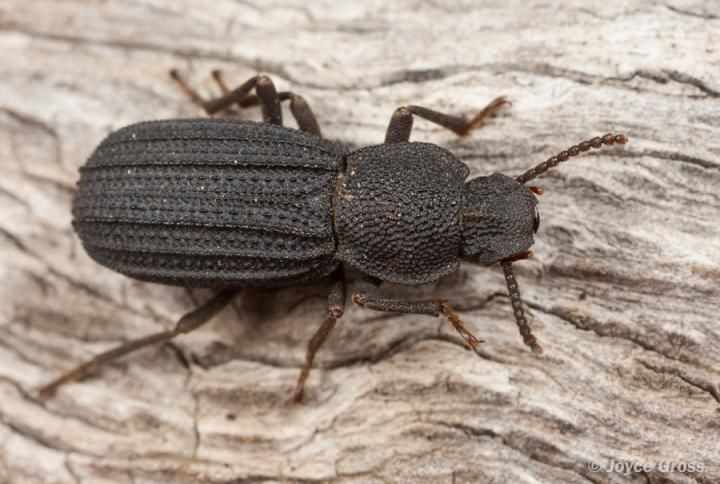Fossils Of Beetles Trapped In Asphalt Show L.A.’s Prehistoric Climate Environment

Ancient beetle fossils tell scientists that the climate in the Los Angeles area has been the same for about 50,000 years.
In a study in the journal Quaternary Science Reviews, the researchers who analyzed dozens of beetles from several species to determine the fossils’ ages found evidence the climate from when they each crawled the Earth was similar to the one in LA today — meaning it has been stable over the millennia.
Species from the ground beetle and darkling beetle families, which still exist in the area, are sound climate measures because they “are sensitive proxies for environmental change in the Los Angeles Basin,” the study said. If an environment no longer suits them, such as when it becomes hotter or colder or when precipitation patterns change, these kinds of insects will migrate elsewhere.
Read: Ancient Carvings Depict Huge Comet Crash That Caused Climate Change
Scientists radiocarbon dated individual beetles they had collected and found variations in their ages that created a range of samples that is nearly continuous throughout the last 50,000 years. Some beetles were between 50,000 and 28,000 years old, others were between 16,000 and 7,500 years old, and the most recent group was 4,000 years old and younger.
Their ages alone suggest an environmental consistency, “because the beetles stayed put for such a sustained period of time, evidently content with their environmental conditions,” the American Museum of Natural History explained in a statement. That’s despite previous research that has asserted prehistoric Los Angeles was colder and wetter — the researchers say it is more likely to have been about as warm and dry as it is now.
“With the exception of the peak of the last glaciers during the late Ice Age about 24,000 years ago, our data show that these highly responsive and mobile beetles were staples in Los Angeles for at least the last 50,000 years, suggesting that the climate in the area has been surprisingly similar,” lead author Anna Holden said in the AMNH statement.
The museum also stressed that fossils of insects that thrive in cooler climates have not been found in the study area.
The beetles were collected from the La Brea Tar Pits in LA, a hotspot for fossils, particularly from the Ice Age, and other archaeological artifacts. They get their name from the viscous pools of liquid asphalt — a form of crude oil — that slowly comes up to the surface from an underground source of petroleum, sometimes carrying ancient animal bones or human bones and artifacts with it.
How did those bones get in there? The La Brea Tar Pits and Museum explains that during the warmer parts of the year, asphalt is especially sticky. “Small mammals, birds, and insects inadvertently coming into contact with it would be immobilized as if trapped like flies on flypaper,” the museum said. “The feet and legs of heavier animals might sink a few inches below the surface.” Although stronger animals might be able to get out of the quicksand-like tar, other animals would have died of exhaustion or been eaten by predators, assuming the predators did not also become trapped.
Read: Penguins Might Go Extinct, But It’s Not Just About Climate Change
Scientists have unearthed more than 1 million specimens from the tar pits over the years, the bones turned brown from the asphalt, and are continuing to find new ones. Plants also have been recovered. They are all up to about 55,000 years old, the California museum said, with the extinct and large canines called dire wolves being the most popular kind of fossils found, followed by saber-toothed cats and coyotes. Other iconic prehistoric animals that have been found include mastodons, sloths, horses, bison, rabbits and an animal called the camelops that was related to llamas but looked like a camel.
Insects were also trapped in the tar pits.
“Recent advances are now allowing us to reconstruct the region’s paleoenvironment by analyzing a vast and previously under-studied collection from the tar pits: insects,” Holden said. “We hope that insects will be used as climate proxies for future studies, in combination with other methods, to give us a complete picture of the paleoenvironment of Earth.”
© Copyright IBTimes 2024. All rights reserved.





















